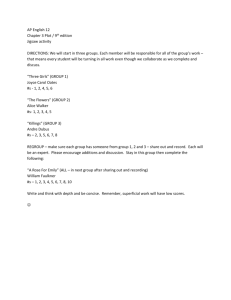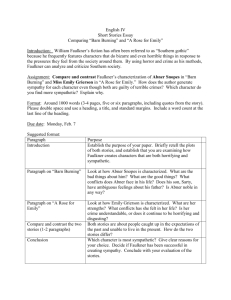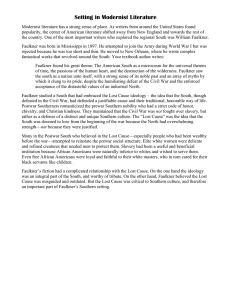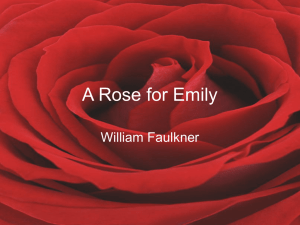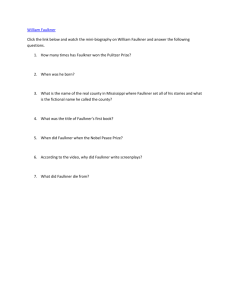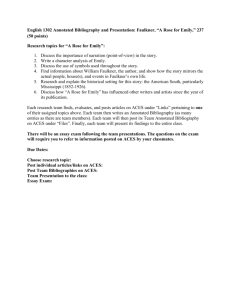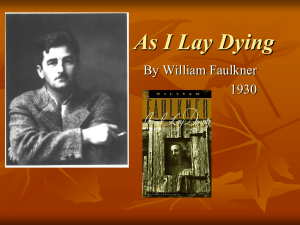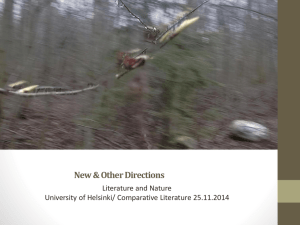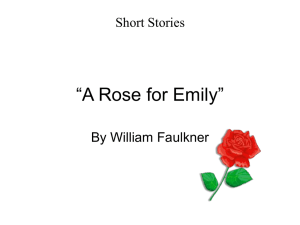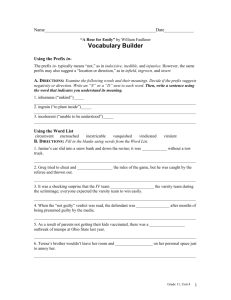Lecture 14: William Faulkner (1897—1962)
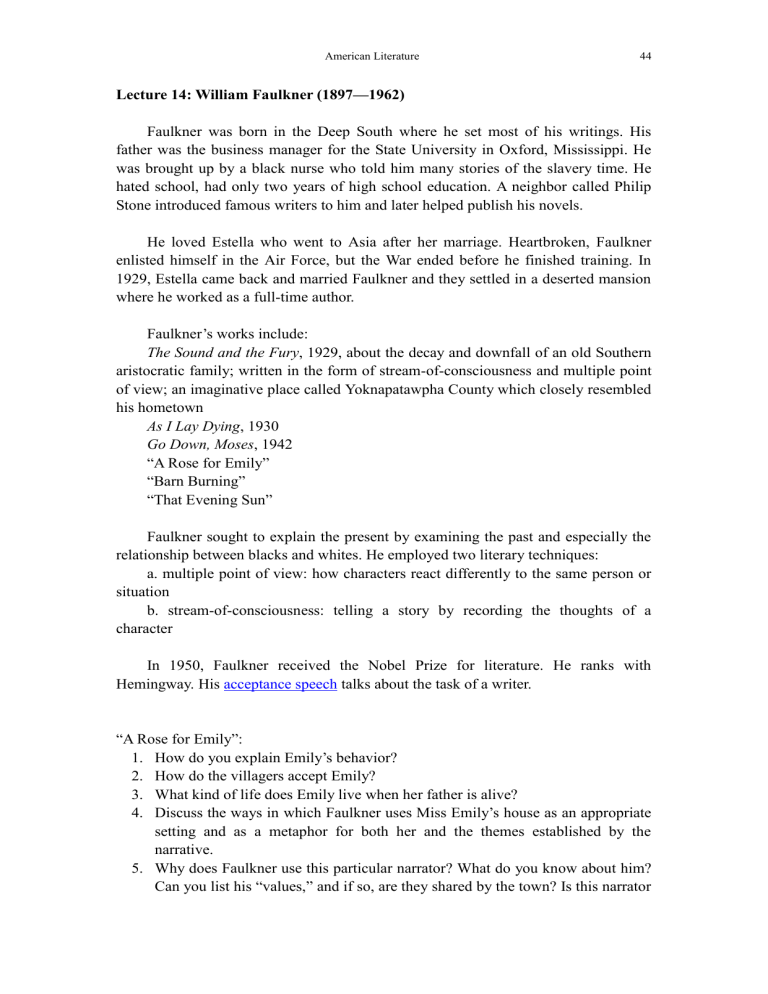
American Literature 44
Lecture 14: William Faulkner (1897—1962)
Faulkner was born in the Deep South where he set most of his writings. His father was the business manager for the State University in Oxford, Mississippi. He was brought up by a black nurse who told him many stories of the slavery time. He hated school, had only two years of high school education. A neighbor called Philip
Stone introduced famous writers to him and later helped publish his novels.
He loved Estella who went to Asia after her marriage. Heartbroken, Faulkner enlisted himself in the Air Force, but the War ended before he finished training. In
1929, Estella came back and married Faulkner and they settled in a deserted mansion where he worked as a full-time author.
Faulkner’s works include:
The Sound and the Fury , 1929, about the decay and downfall of an old Southern aristocratic family; written in the form of stream-of-consciousness and multiple point of view; an imaginative place called Yoknapatawpha County which closely resembled his hometown
As I Lay Dying , 1930
Go Down, Moses , 1942
“A Rose for Emily”
“Barn Burning”
“That Evening Sun”
Faulkner sought to explain the present by examining the past and especially the relationship between blacks and whites. He employed two literary techniques: a. multiple point of view: how characters react differently to the same person or situation b. stream-of-consciousness: telling a story by recording the thoughts of a character
In 1950, Faulkner received the Nobel Prize for literature. He ranks with
Hemingway. His acceptance speech talks about the task of a writer.
“A Rose for Emily”:
1.
How do you explain Emily’s behavior?
2.
How do the villagers accept Emily?
3.
What kind of life does Emily live when her father is alive?
4.
Discuss the ways in which Faulkner uses Miss Emily’s house as an appropriate setting and as a metaphor for both her and the themes established by the narrative.
5.
Why does Faulkner use this particular narrator? What do you know about him?
Can you list his “values,” and if so, are they shared by the town? Is this narrator
American Literature 45 reliable? Does the fact he is male matter?
6.
Many critics have read Miss Emily as a symbol of the post-Civil-War South.
Discuss the advantages and disadvantages of adopting this stance.
7.
How does this story handle the linked themes of female oppression and empowerment? What does it say about the various kinds of male-female relationships in American society of this period?
8.
What is the writer’s attitude toward Emily?
“That Evening Sun”:
1.
What is the central conflict in the story?
2.
How do you understand the double oppression of a black woman?
3.
What role does language play in the story?
4.
What does the symbol of the evening sun represent?
5.
What is the writer’s attitude toward the black woman?
Homework:
1.
Read Eugene O’Neill’s Desire Under the Elms .
2.
Presentations topics:
-- What is the central conflict in the play?
-- What does the big elm tree symbolize?
